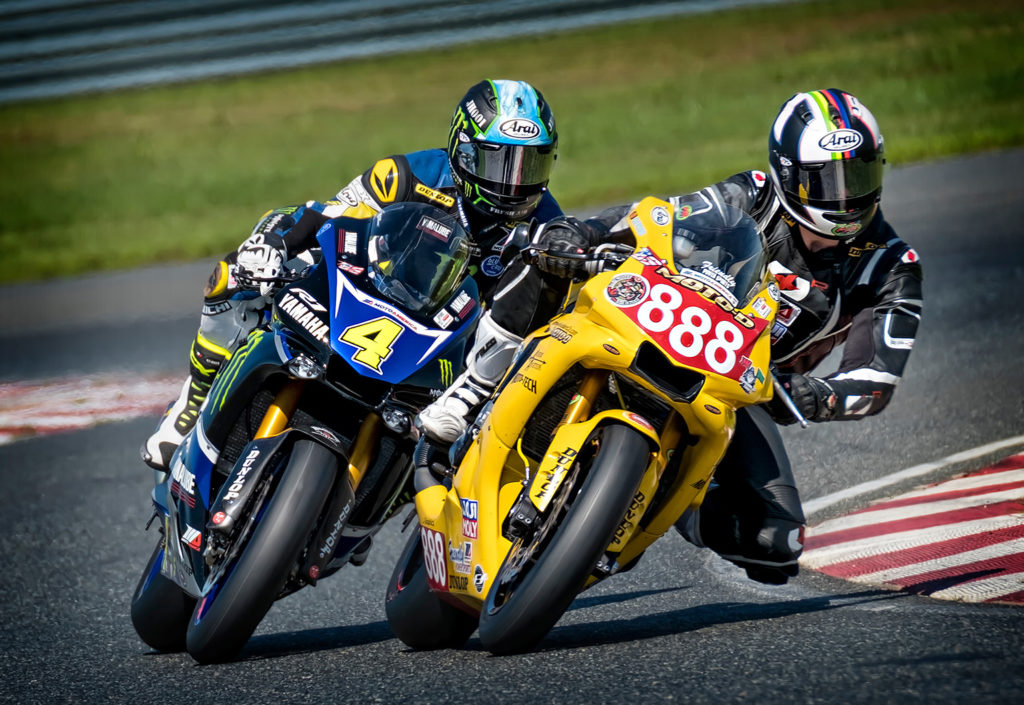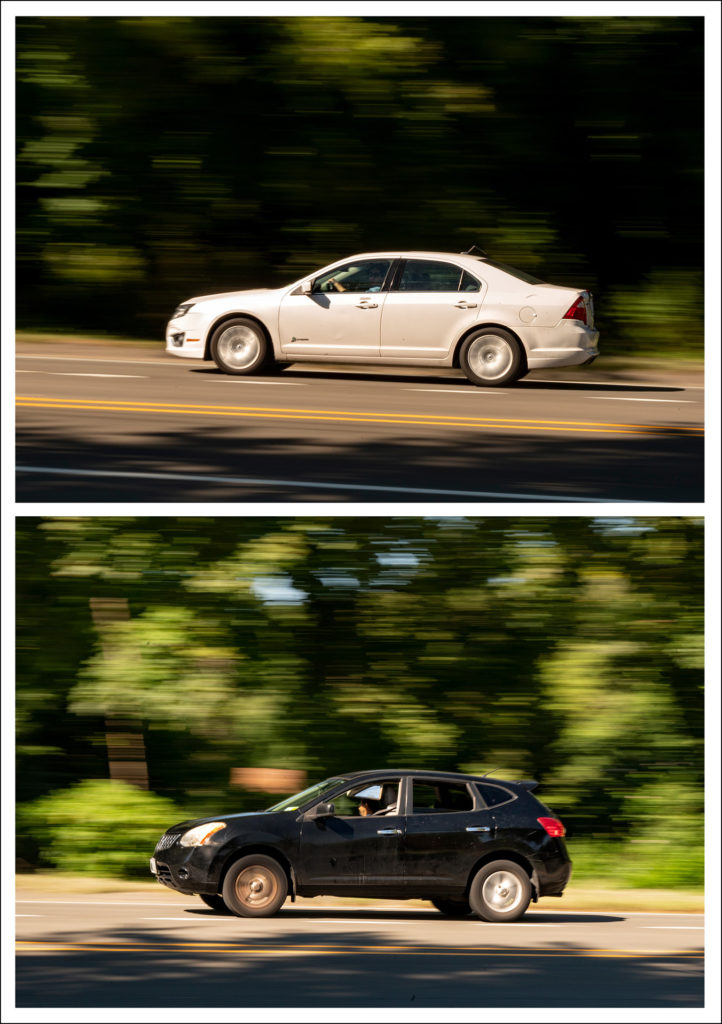SO YOU WANT TO BECOME A PROFESSIONAL MOTORSPORTS PHOTOGRAPHER?
As we draw near the end of “The Need For Speed” series we will attempt to answer the question that has been asked by numerous readers. How do I become a professional motorsports photographer? The answer will be different for every individual image maker. The steps you will have to take, and the things you will have to do, will depend largely on your current experience level.
In this post we will assume that you are starting from “ground zero”. No experience. No portfolio. No contacts in the industry. Just a passion for the sport and a desire to succeed. A willingness to learn and a yearning to be a part of this exciting world.
Have You Got What It Takes?
The most important trait one must possess is enthusiasm; no matter what pursuits you undertake in life. It has been said that “Men have been racing automobiles ever since they made the second one”. I’ve been around muscle cars and sports cars since I first got my driver’s license at age 16. Fifty years later I’m still drawn to the allure of horsepower and speed. That predisposition, more than anything else, made me a prime candidate to become a professional motorsports photographer.
My love for photography started early in life as well. Oddly…around the same time. It should come as no surprise that some of my first photographic subjects were the cool automobiles prowling the streets in the early ’70s.
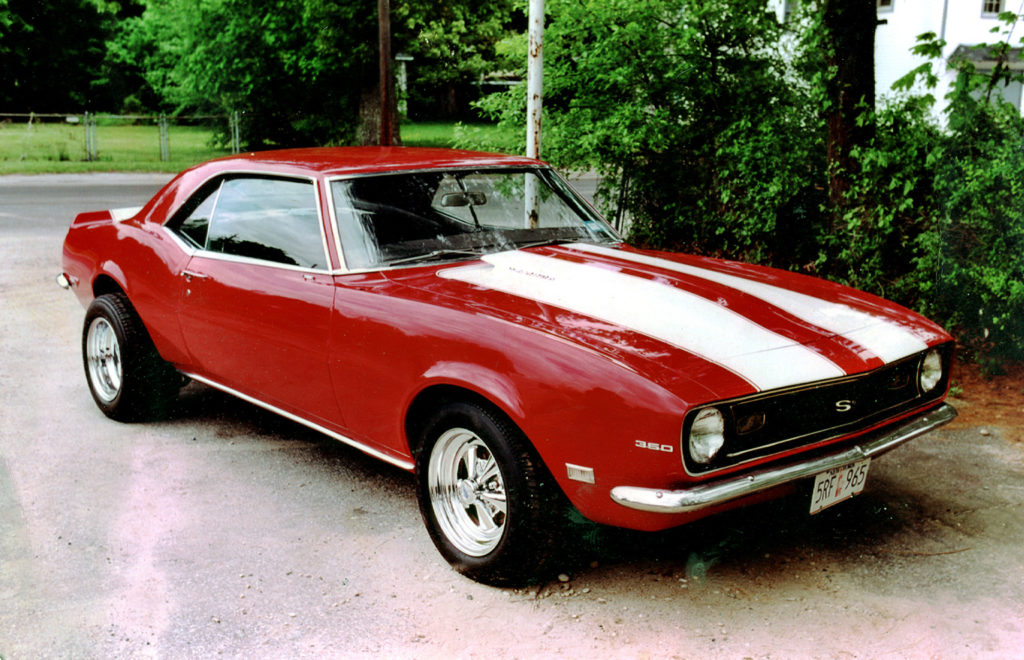
The author’s 1968 Chevrolet Camaro • Restored in the mid ’90s
Turning Pro
I started photographing people in my high school years as well. Volunteering for the yearbook committee earned me free film from the school’s funded supply, along with invaluable darkroom time. Who knew this humble beginning would lead to a four decade long career as a wedding and portrait photographer?
After marrying at an early age I had occasion to show some of my honeymoon/travel photos to the owner of the photography studio that was tasked with photographing my nuptials. He suggested I might have a future as a professional photographer. The rest, as they say, is history.
Apprenticeship
The best way to learn any type of artistic craft is to work alongside talented people that are already doing it. I was blessed to apprentice with a great mentor…someone who has remained a dear friend for more than 40 years now. I assisted this person on my own time for almost zero compensation. I was given more and more responsibility, at the proper times, under the right conditions. In a matter of months I was already off shooting weddings on my own.
I urge you to seek guidance from the folks that are already successfully practicing the craft that you would like to be a part of. Like the old saying goes: “Keep your eyes and ears open and your mouth shut”. Learn everything you can from the people who are already doing it. You can put your own creative spin on things in due time.
Building A Portfolio
You can’t just make the decision to become a professional motorsports photographer and walk out onto the racetrack with your camera in hand. You’ve got to start somewhere. If you’re starting from scratch the best thing to do is walk outside your home and just start shooting.
Remember those motion blur shots we talked about in the first episode? Reality check. They’re not as easy to capture as the accomplished photographers make it look. They take practice. Practice. And more practice.
Start slowly. If you’ve never executed a motion blur shot before, I guarantee you’re not ready to head out on the world stage and capture a Ferrari or Lamborghini going by at 150 MPH on Road America. Make your first attempts on the roads near your home. Start by shooting sedans and minivans going by at 30 MPH. When you get that speed dialed in move to faster thoroughfares. Practice, practice, practice to the point where you can flawlessly execute motion blurs with near 100% consistency. The time to learn is now…not when you’re on track expected to produce great work for a paying client.
Two Wheels or Four
Photographing motorcycles is a bit more difficult than automobiles. Their smaller size and agile maneuverability make them a bit more difficult target to lock in on. Get out on the street and photograph some motorcycles, too.
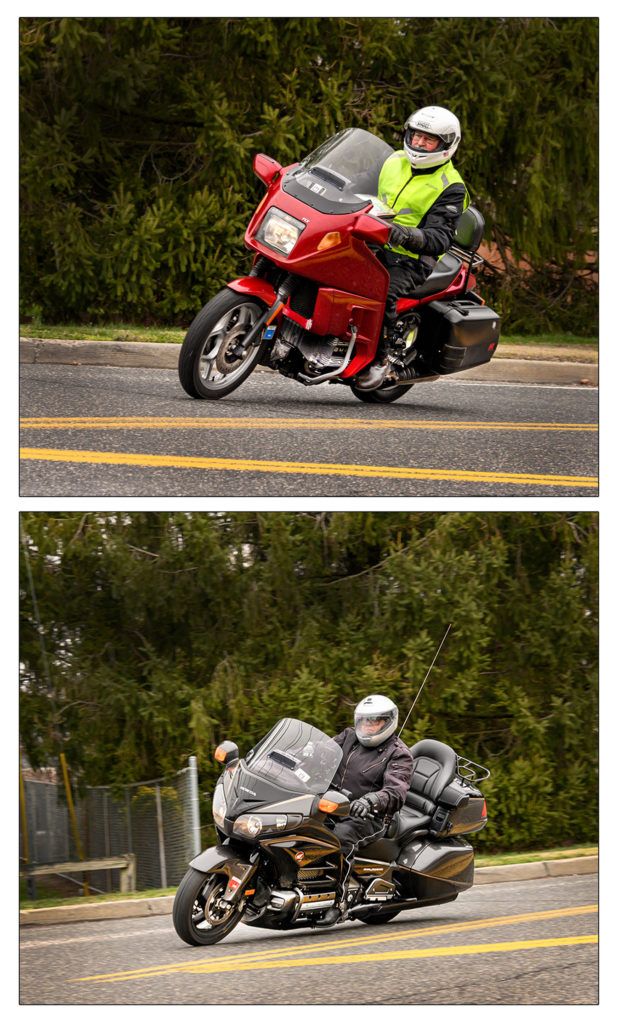
Just your average motorcycle enthusiasts out for a Sunday ride near my home
Find out where local motorcyclists hang out and take some photos. Local motorcycle charity runs are usually well-publicized. Get permission, get the route and stake it out. Photograph the bikes going by. Do some motion blurs as they pass. Do some shots as they round corners approaching the camera.
Get proficient shooting motorcycles that are traveling at prudent street speeds. The difficulty level increases exponentially with road racing bikes hitting 200 MPH top speeds on the racetrack.
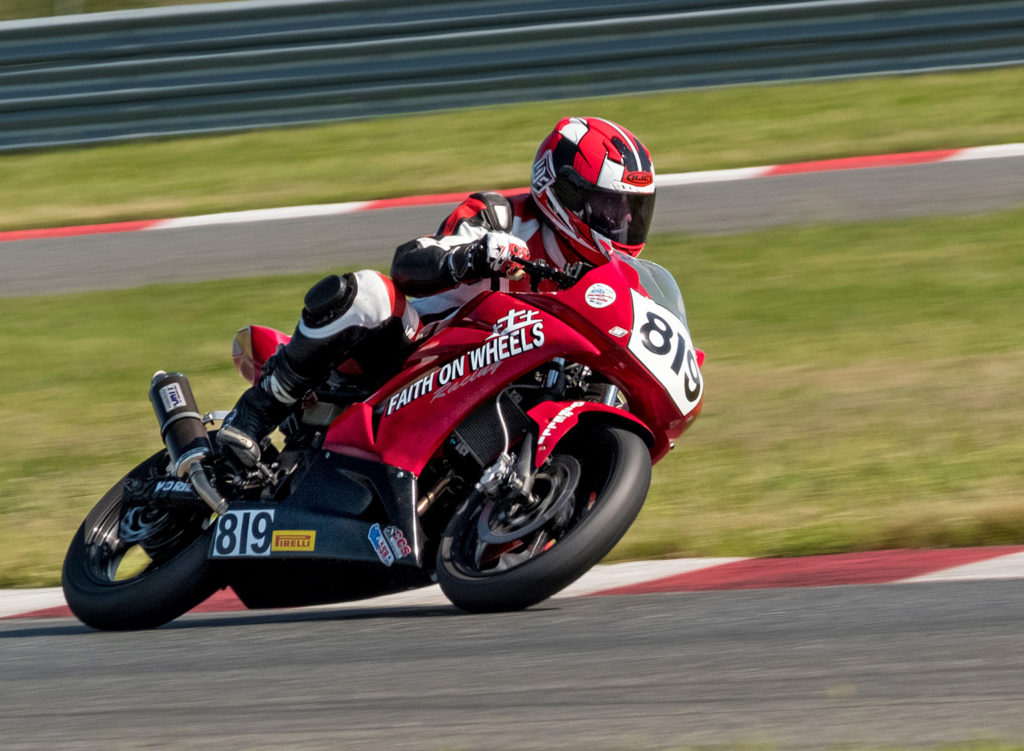
Take It Up A Notch
Once you’re comfortable photographing the vehicles you encounter around town, it’s time to take the next step on your journey to become a professional motorsports photographer. Get yourself out on the track. Make some real racing images for your portfolio.
Your first ‘assignments’ will take place at smaller, local race venues. The events will not be national or international contests. They will, however, give you a real taste for what it’s like creating dynamic motorsports images.
If you’re excited about motorsports photography you’re probably a bit of a Motorhead yourself. Chances are you have some Motorhead friends. How do they engage in their hobby? Do they attend car shows? Track days? Do they go to racing events?
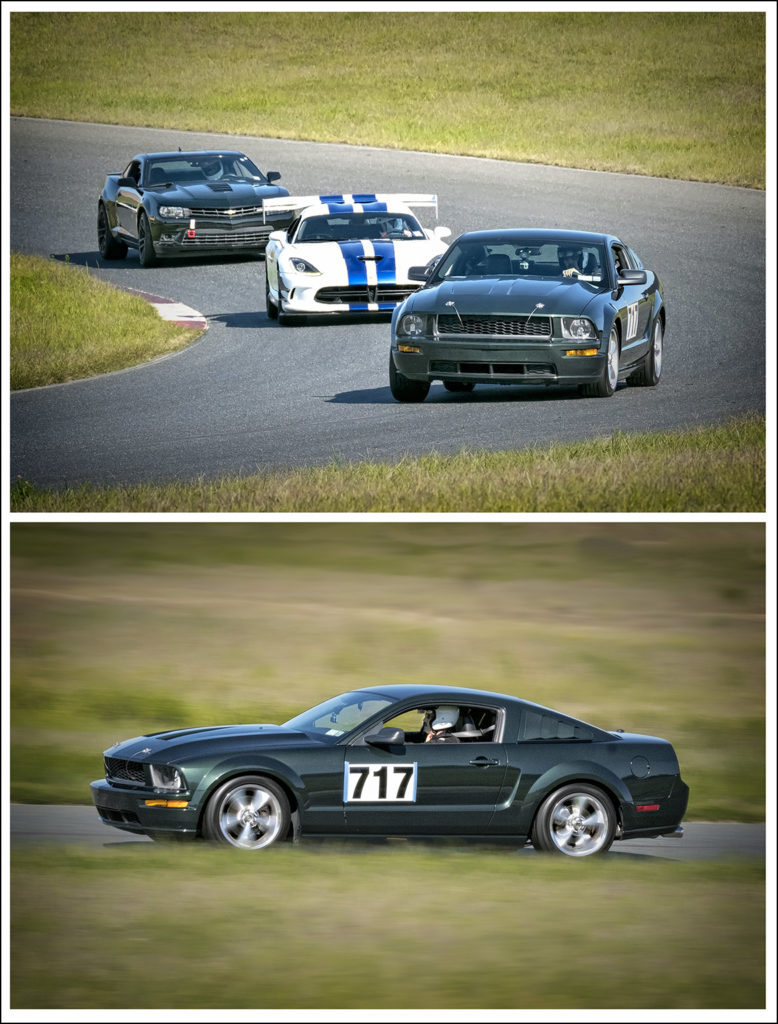
The images above are of a friend on the New Jersey Motorsports Park “Lightning” race course during a public track day. He is operating his registered, street legal Bullitt edition Ford Mustang. Track days are when members of the general public buy time on a professional race course to get a feeling for what racing looks like from a driver’s point of view. Participants can purchase paced laps, where they follow a professionally driven race car in their own vehicles. They can also participate in full day or multi-day programs including technical classroom instruction along with the track time.
Limited Limitations
You won’t be “inside the fence” when photographing a track day event. You’ll be in an area where spectators would normally be. You won’t, however, have crowds of people vying for the best view of the track and getting in your way. You’ll probably be all alone out there, taking pictures to your heart’s content.
You won’t need a lot of real specialized equipment either. The track day images above were captured using an AF-S Nikkor 70-200mm f/2.8G ED VR II zoom lens…a lens I carried in my bag, at the time, for my wedding photography. Like I said in the first post in this series, concentrate on the fundamentals. The gear will come later. Get comfortable with wandering around the race track, picking good spots for photographs and getting them down on camera. Done properly, you’ll create your first real portfolio images here.
Make The Call
Call the race venue or the track day organizer before you just show up at the track. Find out what rules they may have regarding spectators at the event. Most are very lenient. This is a consumer activity where family and friends often accompany the participants. You may have to sign a liability release to be on the grounds. Get used to that. You’ll be ’signing your life away’ at every professional event you cover when you become a professional motorsports photographer.
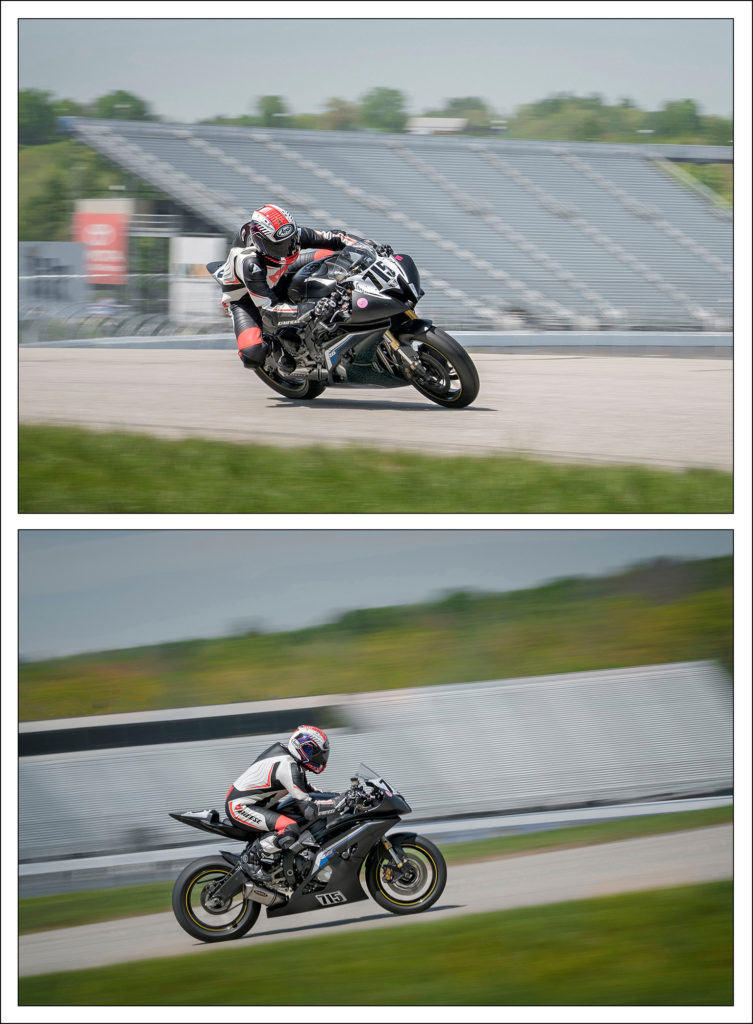
The images above were created at a motorcycle track day held on the road course at New Hampshire Motor Speedway. This day provided some great learning opportunities before I took on the challenge of professionally photographing MotoAmerica events. The bikes on track this day were predominantly professional racers and race teams who had purchased track time to practice for the upcoming Loudon Classic road race.
Though the grandstands are empty, the racers were giving it their all. I was able to create dramatic images that remain in my portfolio to this day. A phone call to the track’s media relations office got me a pass to be on track where credentialed photographers would be stationed during the real race. I did have to provide proof of premises and operations liability insurance, which I maintained at the time for the operations of my wedding and portrait photography studio.
It’s Race Day! Almost.
Your next step might be to attend an actual racing event; albeit as a spectator. The world of road racing is unique in that spectators have nearly as much access as credentialed media personnel. A couple of prime examples come to mind.
The images below were captured at Lime Rock Park in Connecticut during practice for The Pirelli World Challenge. During practice sessions very few spectators are on site. You’ll have unobstructed views of the track from everywhere. Even on race day the difference between where spectators and credentialed media can stand is only 20 feet apart at some spots on the track.
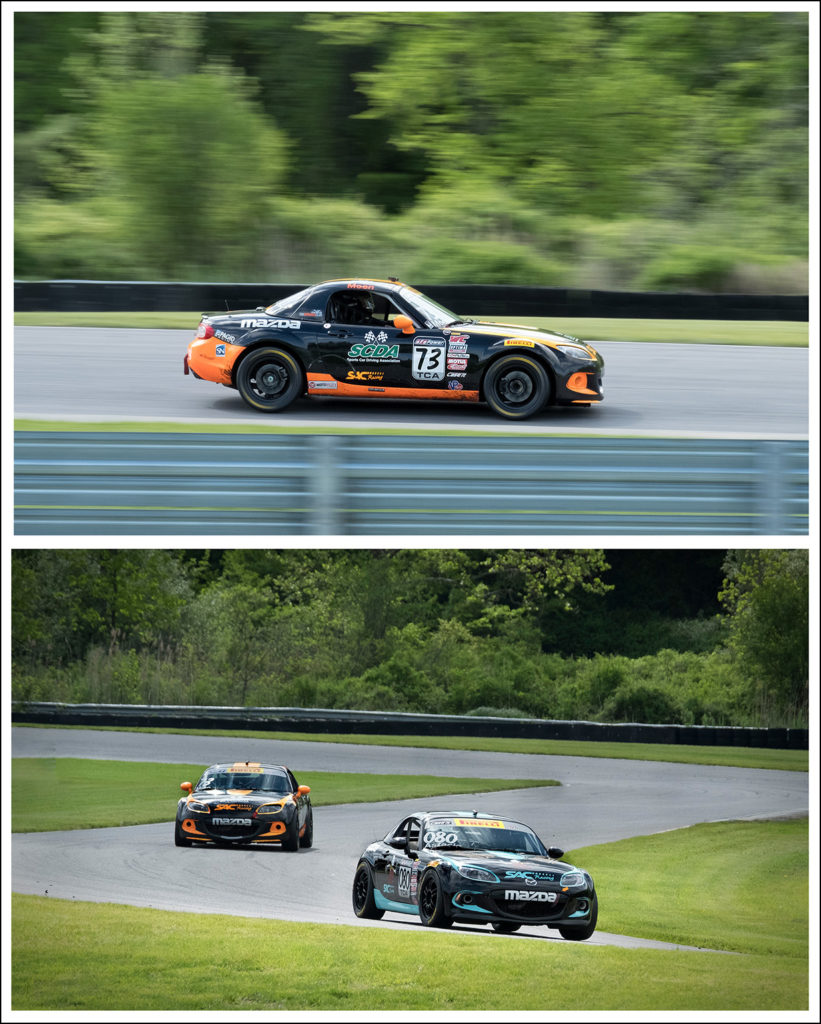
Most big motorsports events transpire over the course of a weekend with practice sessions on Friday. The actual racing events take place on Saturday and Sunday. These Friday practice sessions allow spectators to have virtually unobstructed views of the track. They provide a great opportunity to photograph professional racers without being credentialed to be on track. Spend a day as a ’spectator’ at a road course and you’ll certainly come away with some great images for your portfolio.
Thank God It’s Friday
The images below were captured on The Thunderbolt Course at New Jersey Motorsports Park during MotoAmerica Championship weekend. The big events, again, take place on Saturday and Sunday…those being the Superbike, Supersport and King of the Baggers classes.
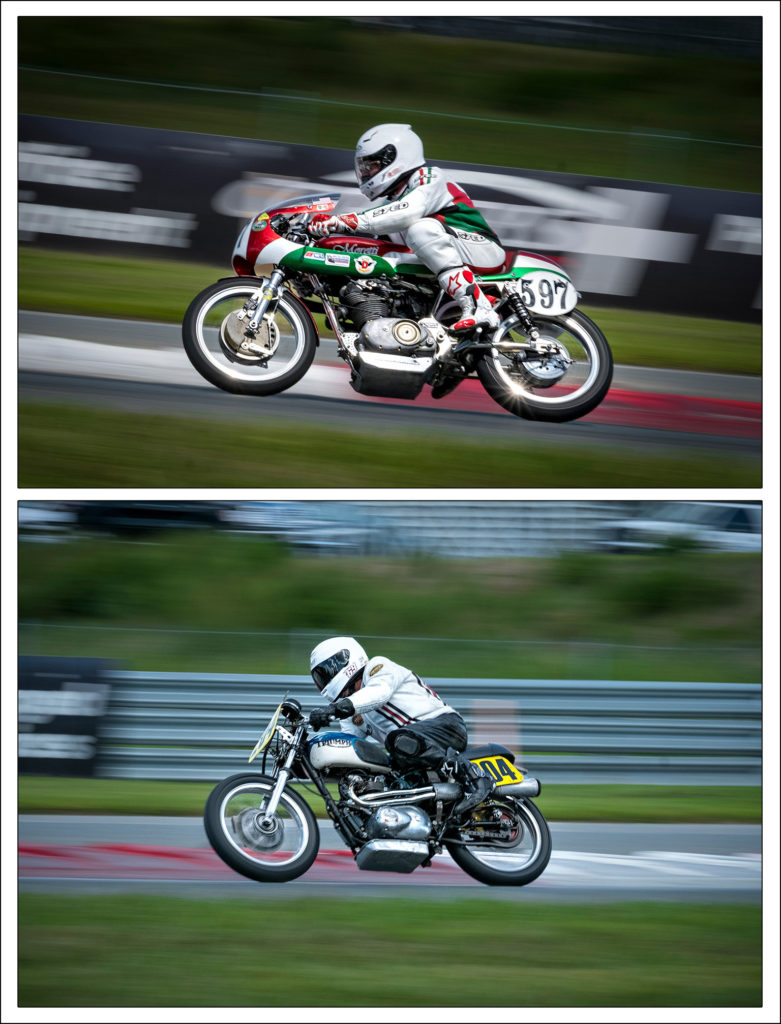
This Friday session, featuring bikes entered into The Vanson Leathers Vintage Racing event, gave me a great opportunity to tune up my motion blur skills for the upcoming championship races. These vintage racers are moving down the main straightaway at about 80 MPH…at least 100 MPH slower than their Superbike relatives will be going tomorrow.
New Jersey Motorsports park is another venue where the general public has access nearly as good as the credentialed media. There are great opportunities at this track for aspiring photographers to fill their portfolios with great racing images. Especially at the Friday sessions when there are less spectators on site and ticket prices are substantially lower. Spend some quality time at the track and it won’t be long before you become a professional motorsports photographer.
Wheels Up!
There’s nothing like the sensation of a pair of NHRA Top Fuel Dragsters or Funny Cars launching off the starting line. But before you get the privilege of standing trackside with full event credentials hanging around your neck, you’ll have to prove yourself worthy of being there. You’ll need some drag racing images in your portfolio.
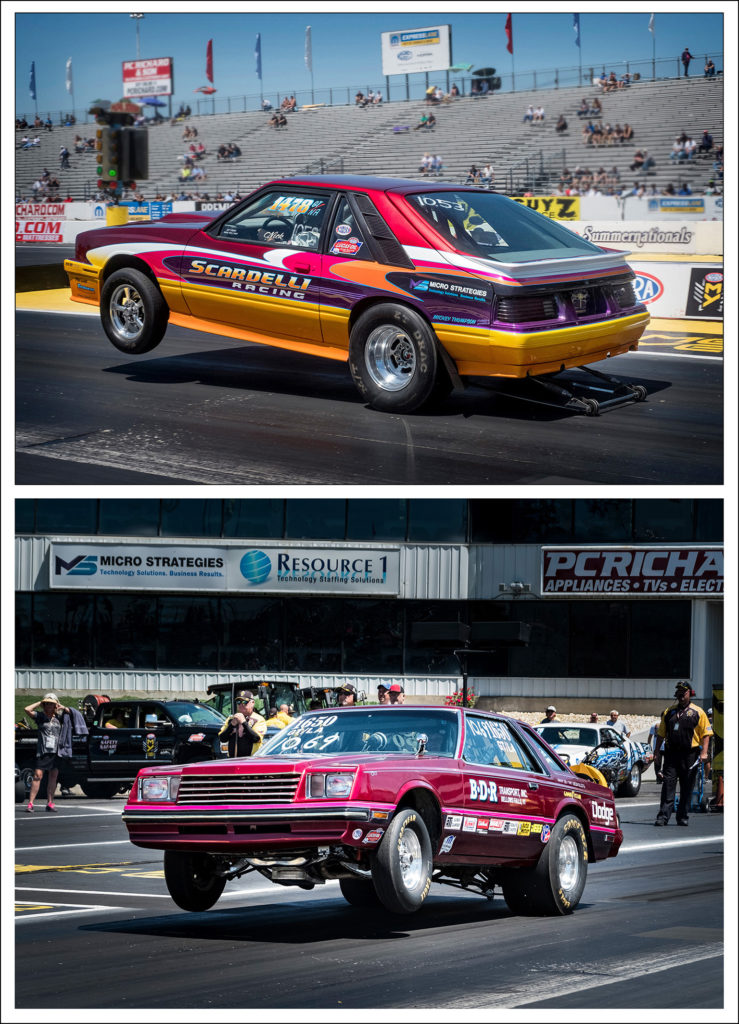
There’s lots of great racing going on at venues all across the United States. These cars are not as mind-bogglingly fast as the nitromethane monsters you’ll find on the national stage. But they are certainly photogenic. Stunning colorful paint schemes. Front ends lifting skyward in wheelies as they launch off the starting line. Most importantly you’ll find yourself able to access spots on the track that are not available to spectators at major events and venues.
Reach out to your Motorhead friends and find out where folks race in your area. Spend some time at the track and capture some epic images. Again…the grandstands may be sparsley populated, but your viewfinder will be full…with quality portfolio pieces.
The Checkered Flag
The checkered flag. The end of the race. And the conclusion of this feature which we hope will help you to become a professional motorsports photographer. In the next episode we’ll discuss how to secure those all-important media credentials. We’ll also touch on some strategies to hook up with those high-paying clients that will be purchasing your images. As always we welcome your comments below. If you have any specific questions you need answered, feel free to contact us via email. Be sure to subscribe to Roadcraft USA to receive alerts when new posts hit the blog.
Please help support the Roadcraft USA online resource by making product purchases through the links in this post. As Amazon Associates we earn commissions from qualifying purchases made through these links. There is no additional cost to you whatsoever. Thank you for your support!
Click Here to view an interactive visual index page where you can quickly browse through all of the great features that are published on the Roadcraft USA blog.

